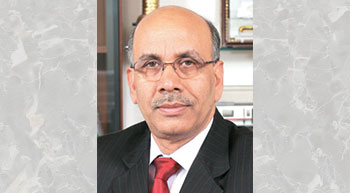Dr Mangu Singh, Managing Director, Delhi Metro Rail Corporation, speaks on the state of Metro projects around the country.
You closely worked with India´s Metro Man, E Sreedharan, on the country´s maiden Metro railway project at Kolkata in the early 1980s. How has the planning, execution and commissioning of Metro projects evolved since then?
Ans: When the construction work of the Metro was started in Kolkata and later in Delhi, Indian engineers did not have the required experience to execute projects of such mammoth proportions. For the Delhi Metro, we had hired a consortium of foreign engineers who had supervised our first phase of construction. However, over the years, we have gained the necessary experience and have put a system in place. Now the entire process is very system driven where there are experienced people handling all facets of Metro construction such as planning, finance, tendering, human resources and the actual work on ground.
Are you satisfied with the growth in ridership on the Delhi Metro network? Have train services been able to match it?
Ans: The growth in ridership has been more or less as per our expectations. We have gradually increased our carrying capacity to cope with the increasing traffic. After starting only with four coach trains, now we have services of six and eight coach configurations as well. In the upcoming phase, we will introduce a new signaling system called ´Communication Based Train Control´ (CBTC) which will help us run trains at frequencies of 90 to 100 seconds, which will further enhance the carrying capacity.
To what extent have other transport systems such as public transport buses been able to supplement the efforts of Delhi Metro to enhance connectivity?
Ans: Last mile connectivity to and from the Metro stations raemains an area of concern for us. We are operating a limited number of feeder buses to cater to this issue but we need more buses as well as other modes of transport to ensure that the Metro acts as the primary mode of travel and others act as connectors.
You oversaw the construction of the high-speed Airport Metro Express from Delhi International Airport to the New Delhi Railway Station. How successful have you been in absorbing the line into your system?
Ans: We have taken a number of measures to increase the popularity of the Airport Metro. Apart from decreasing the fares, we have also made the smart cards of the Delhi Metro valid for travel on Airport Metro as well. The timings have been adjusted to cater to the railway passengers, especially those of the Shatabdi Express trains who wish to travel to the airport. There has been a two- to three-fold increase in ridership ever since we took over the operations.
What are the other implementation challenges that promoters of Metro projects must keep in mind and how should they go about effectively planning for them?
Ans: Metro projects are highly time-consuming and cost-intensive. Therefore, meticulous care needs to be taken to ensure that projects are finished within budget and time constraints. While planning the Metro itself, certain pertinent issues such as availability of land and necessary finance must be factored in. On many occasions, projects may undergo inordinate delays due to non-availability of land and lack of finance.
You are involved in implementation of Metro projects in the cities of Jaipur, Kochi and Lucknow. Tell us about their status.
Ans: We have constructed a 9.25-kilometre long corridor for the Jaipur Metro which is now operational. We are also carrying out construction of another expansion in the city. The construction of Metro in Kochi is also expanding rapidly and satisfactorily. We have also been assigned similar projects in Mumbai and Vijayawada apart from our routine consultancy assignments in many other cities.
Are there any international engagements in the pipeline?
Ans: Right now, we are involved in the Dhaka Metro project as a consultant. Some other international projects are also expected to materialise but we would prefer to talk about them at the appropriate time.
Other than ticketing, what are the additional means of revenue generation being employed by the DMRC?
Ans: Apart from ticketing, Delhi Metro tries to generate revenues through property development activities. We lease out commercial spaces in our stations. That apart we have an IT Park in Shastri Park which houses many multinational companies and banks. Some more such projects are in the pipeline in areas such as Jantar Mantar and Saket.
Do you think a fifth phase of the Delhi Metro will be required to keep pace with the growth in population as well as expansion of the National Capital Region?
Ans: Right now, there is no proposal regarding Phase 5. It is too early to speak about such a possibility.
Given Delhi Metro´s renowned levels of professionalism, your employees are readily hand-picked to work on other Metro projects. How do you cope with this challenge of attrition?
Ans: Since so many other Metro projects are coming up within the country, attrition is a challenge that we regularly confront. We try to provide our employees with a positive work environment and additional facilities such as housing and transport. However, we also appreciate that being the country´s largest Metro organisation, it is only obvious that other Metros will look up to us for their manpower requirements.



Leave a Reply
You must be logged in to post a comment.